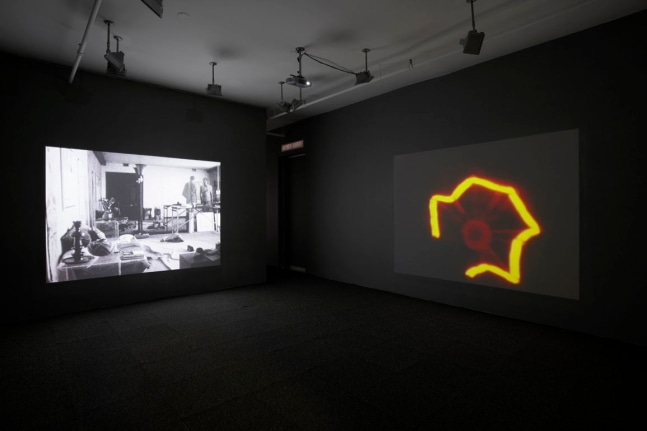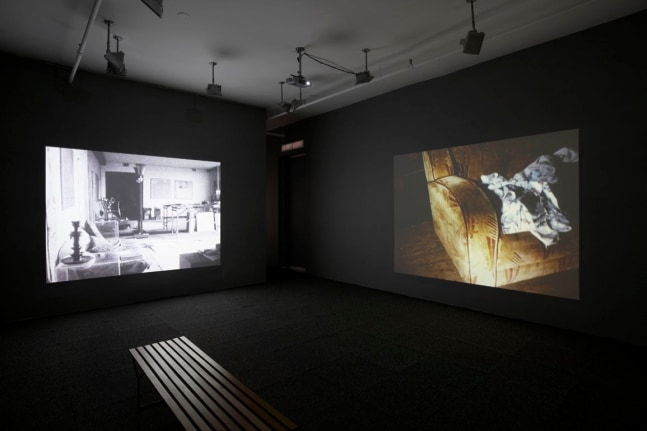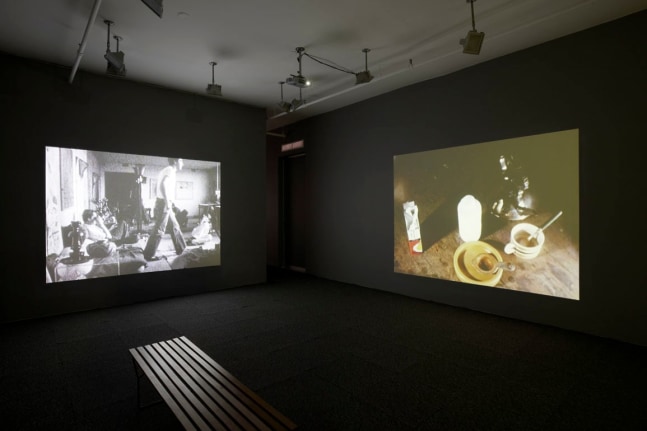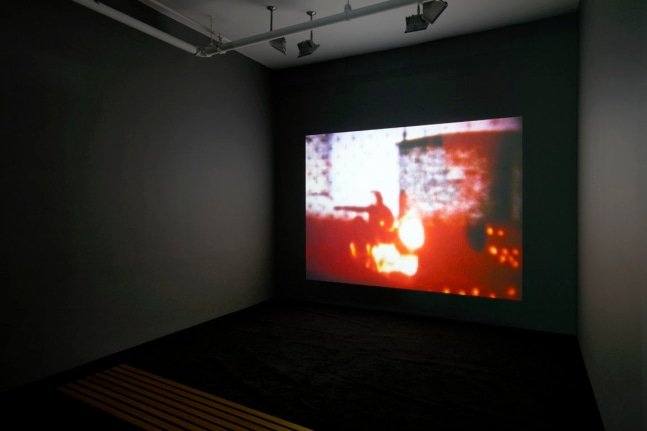Derek Jarman
Early Films (Super-8mm)
January 17 – February 21, 2009
Elizabeth Dee Gallery is proud to present an exhibition of early films by Derek Jarman, one of the most important and groundbreaking figures of British Independent cinema. Although his oeuvre crossed a range of media boundaries including literature, painting, set design, gardening, and activism, Jarman is best known for his film work, producing over 40 films from the early 1970s until his untimely death in 1994. His full length features such as the homoerotic Sebastiane (1976), one of the first films to represent gay sexuality and the first to be shot entirely in Latin, Jubilee (1977), arguably the first punk film, and the poignant Blue (1993) established Jarman as one of the primary catalysts for a generation of artists and filmmakers whose work is marked by a visionary and dark, subversive imagination. However, it is his early work produced in Super-8, a medium he returned to throughout his career, that reveals the style and sensibility of Jarman’s unique artistic vision and the range of approaches he would come to take in his more well known feature length works.
Highly personal, poetic and affecting, Jarman’s Super-8 works fall roughly into two, overlapping categories: documents of his immediate environment and imaginative experiments in film-making that sought to express emotion through image rather than acting. The films are “fascinating in their multi-layeredness; they interweave reworkings of history, recuperations of iconic figures, avant-garde forms, personal diaries, gay polemics, political statements and social documents.”[1] Referred to as “home movies” by the artist and often screened for small audiences composed of Jarman’s close friends (many of whom served as the actors in the films), the Super-8s express Jarman’s personal concerns and interests as an artist at the time rather than reflect popular trends in mainstream narrative cinema.
Jarman began his first film, Studio Bankside, in 1971. The six minute piece presents still and moving images of Jarman’s warehouse loft on the Thames, populated by the creative “glitterati”—artists, designers, and musicians—that constituted his social circle at the time. The work demonstrates Jarman’s extraordinary eye for detail and his interest in experimenting with what was then very much a new technology. Sloane Square (1974-76) continues in this vein, using stop-frame filming techniques to record the artist’s friends, companions, and working environment. Ashden’s Walk on Møn (1973) and Sebastiane Wrap (1975) present another side of Jarman’s filmic aesthetic, one more closely tied to his painterly practice. In the earlier film, ghostly images of men walking through a forest to a beach ringed by cliffs are superimposed with brilliant celestial configurations, while the later film presents a seemingly abstract shape that eventually resolves into a large reflective square set on a beach amongst sunbathing nudes. In the Shadow of the Sun (1974) stands as a culmination of many of Jarman’s interests throughout the early 1970s, combining several short films shot over the previous years that express his interest in symbolism, alchemy and Jungian philosophy. At 58 minutes, the film is a complex and haunting work imbued with scarlet, orange and pink hues, marked by experimental techniques such as refilming multiple projections to produce a “shimmering mystery.” This master work joins a long line of avant-garde classics and manifests Jarman’s declaration that film is “the wedding of light and matter- and alchemical conjunction.”
Films lent by James Mackay and with thanks to Basilisk Communications Ltd., London. Music by and with thanks to Simon Fisher Turner, London. Additional thanks to Stuart Comer, Tate Modern, London.
[1] Michael O’Pray, Derek Jarman: Dreams of England (London: British Film Institute, 1996), p. 9.
















